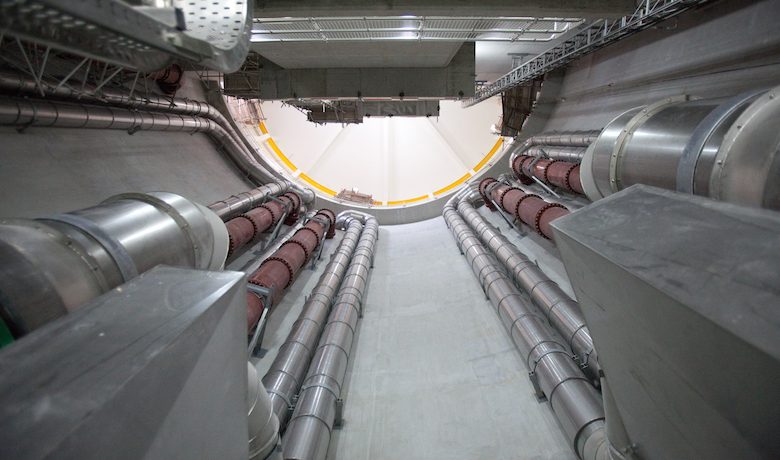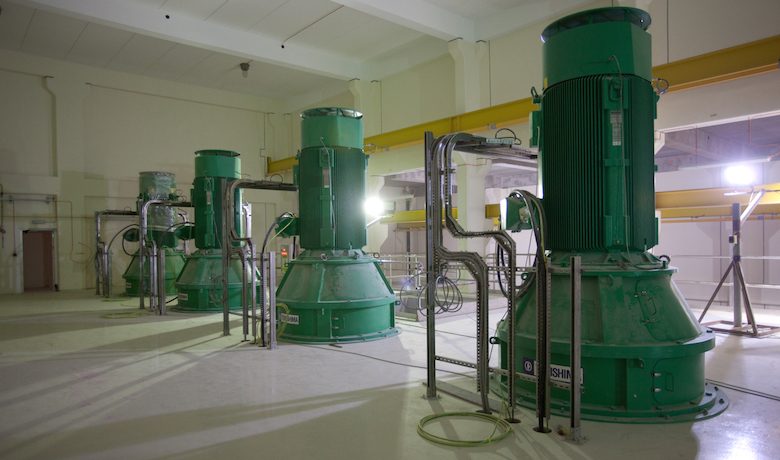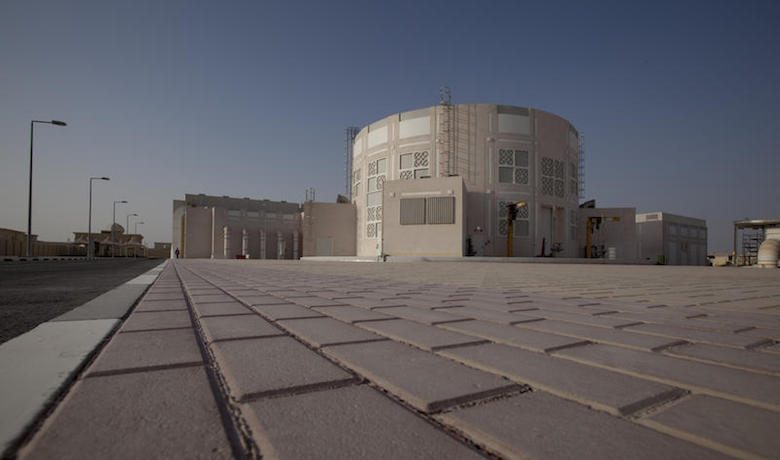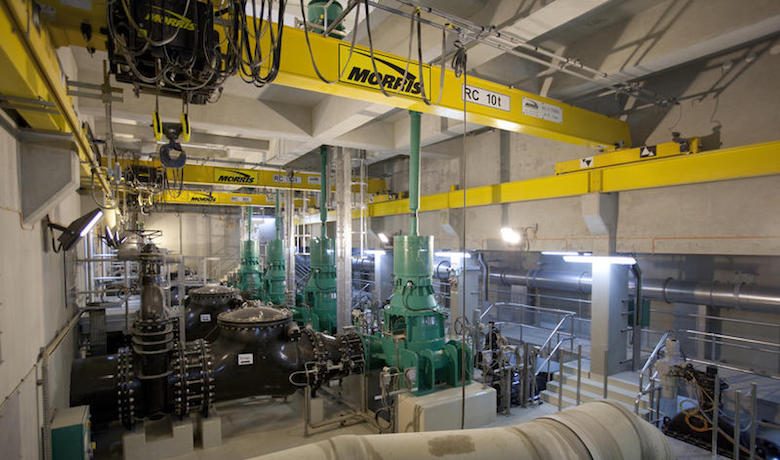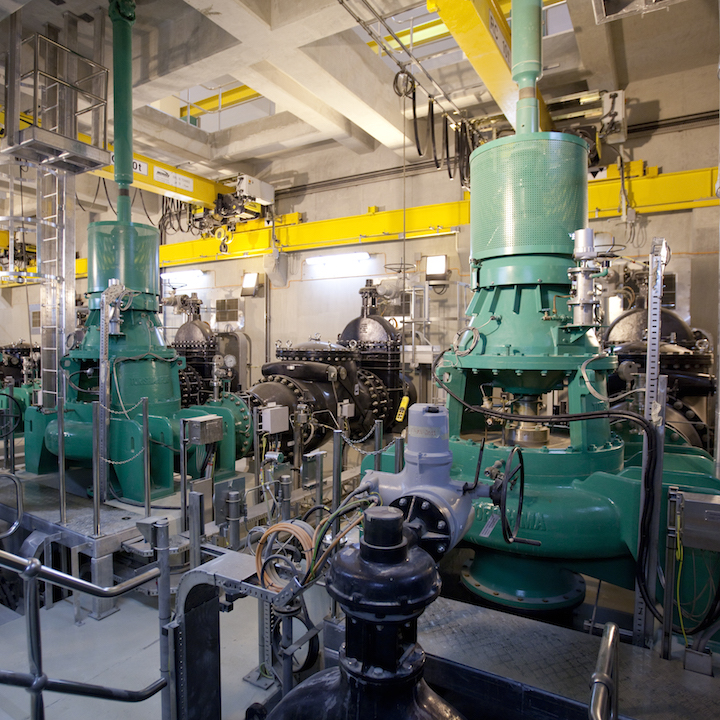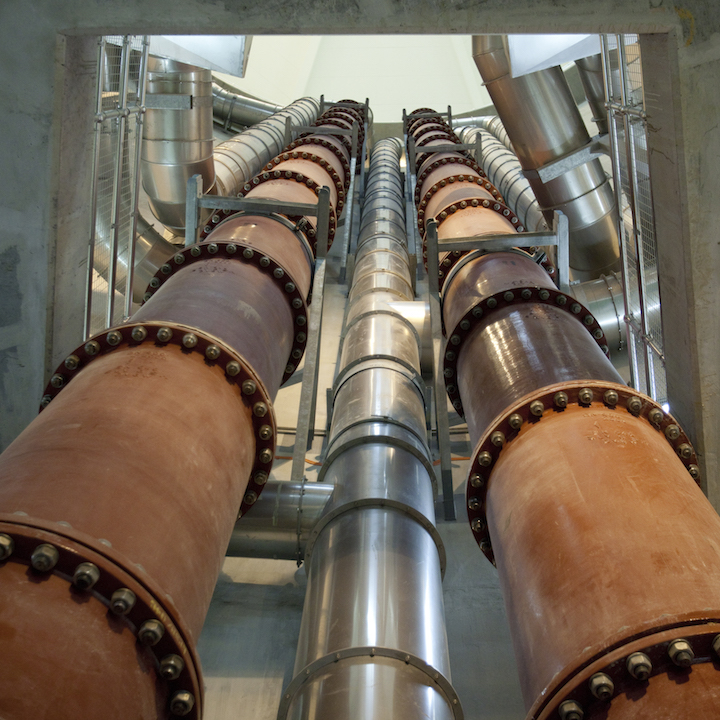TECHNICAL OVERVIEW
Pumping station PS70 consists of an initial well 40 metres deep and 20 metres in diameter (including a screen to filter large sollid waste), a second well at the same depth but 40 metres in diameter designed to raise wastewater, a main building above-ground housing a second set of pumps to convey wastewater to the treatment plant (for a total of sixteen pumps, each with a capacity of 4,800 cubic metres per hour and 800 kW), auxiliary buildings such as administrative and electrical facilities, and a unit for treating odours.
Given the ground’s geological properties, earthworks were carried out mainly with rock-hammer excavators and cable excavators for mucking operations. Given the rock’s permeability, we had to evacuate 3,000 cubic metres of pumped water a day, with the water being reinjected into a well 300 metres deep. Construction of the two wells was achieved through eleven successive lifting operations of 3.75 metres using climbing formwork. Peripheral walls 1.5 metres thick were raised with standard formwork. The more central and complex parts, including reinforcement of 300 kilograms per cubic metre, required the use of specific tools, thereby facilitating concrete pouring for the one-piece casting of each level.
To transfer wastewater from pumping station PS70 to the treatment plant, we had to build a network consisting of ductile cast-iron pipes 1.6 metres in diameter, a 400-millimetre polyethylene pipe, and four, 150-millimetre PVC ducts. The pipes have a polyethylene inner lining specially designed for this project to protect them from the acidity of wastewater. Since the soil is highly corrosive due to its high chloride content, the exterior of the pipes was also protected by applying a coating bituminous adhesive strips. The pumping station is located in a district undergoing urban development; accordingly, special care was taken to reduce noise pollution. It’s worth noting that no complaints about noise were received from local residents during the whole project even though we used blast techniques to excavate very dense soil layers during our earthworks operations.


